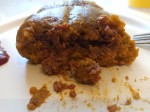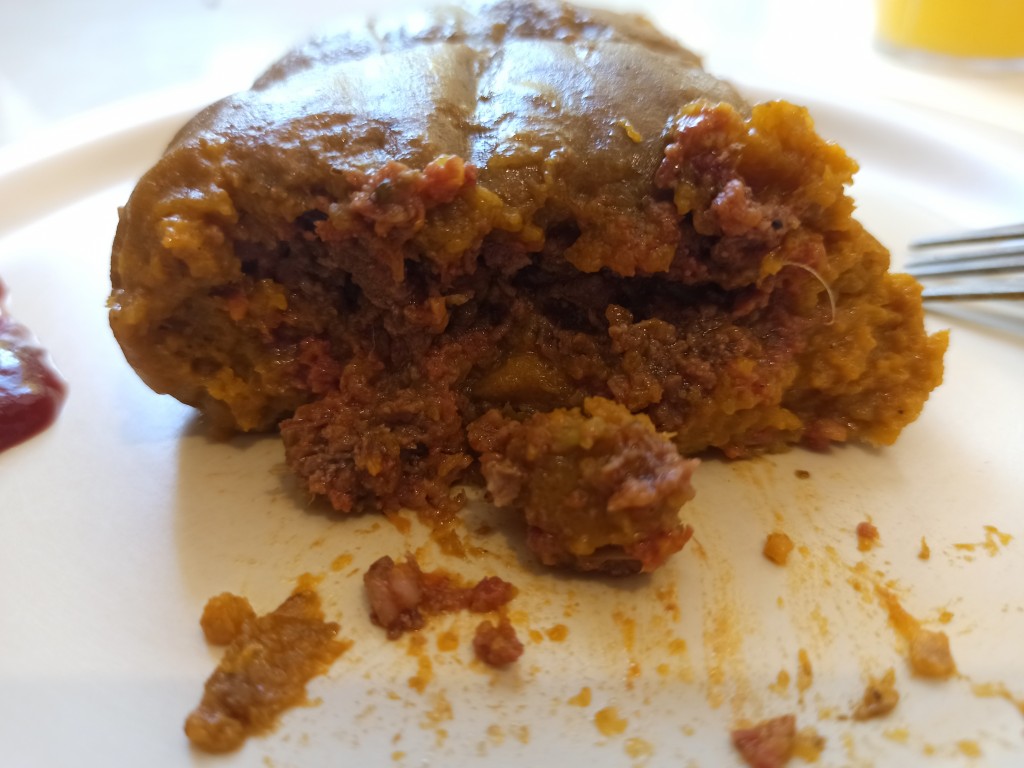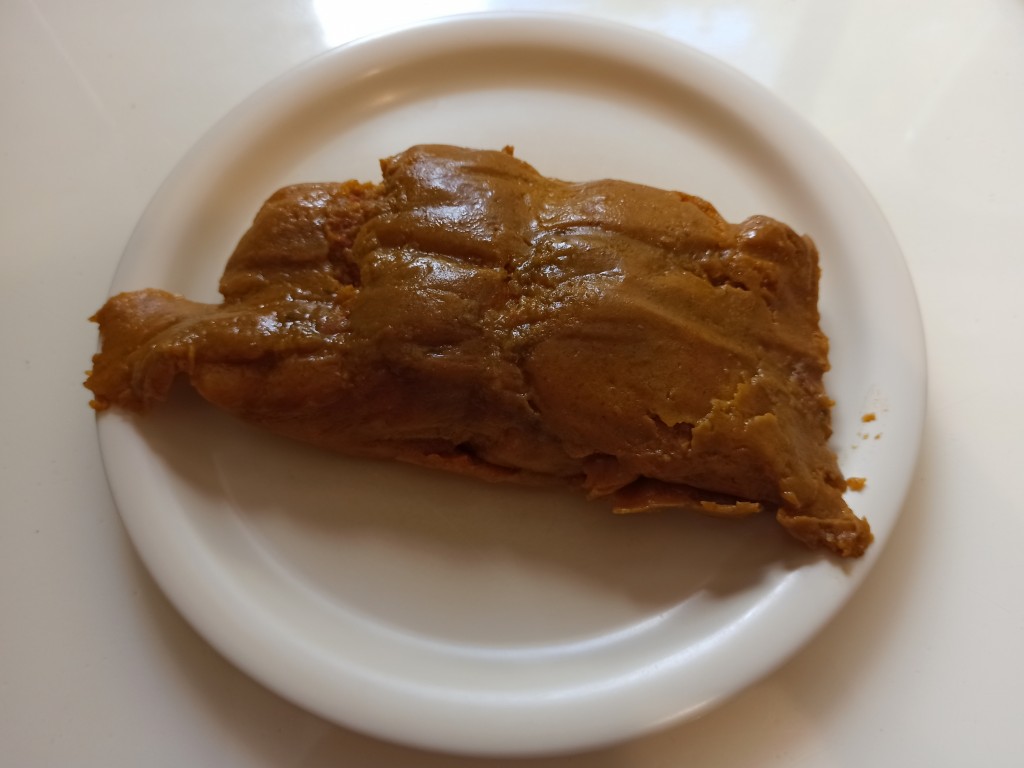EAT IN ASIA / Destinations / Other destinations / Northern america / Dominican republic
What is the Dominican Pastelón de Plátano Maduro?



What is Pastelón de Plátano Maduro?
Pastelón de Plátano Maduro that is prepared in a banana leaf, is one of main dishes served during the end of December. Actually, it is extremely popular between 24th and 31st December, when many families celebrate la Nochebuena Dominicana. However, as the preparation is quite difficult, many people decide to buy them, instead of making them at home. But, as almost always, no bought Pastelón de Plátano Maduro in a banana leaf is as good as the one made at home. Well, we know when it is eaten, but still the name is mysterious. So, what is Pastelón de Plátano Maduro? If you are familiar with Mexican tamales and other dishes of that type, Pastelón de Plátano Maduro will not be a surprise for you.
Recipes and varieties

However, there exists no single recipe to prepare a Pastelón de Plátano Maduro. Every family and every housewife have their own way and method of making this meal. And what is very important and positive in these recipes, the Pastelón can be prepared according to your favorite taste! It can be softer or harder. Can have different colors if you add other vegetables to the dough. It can be more, or less spicy or even have a different tenderness. Remember, all depends on tastes you enjoy the most!
Make the dough your way
Apart from that, while preparing an ideal Pastelón de Plátano Maduro, just observe the dough and add ingredients according to its requirements. So, for example if the dough is too soft, just add more plantains to the mixture. And the other way round – if it is too hard, just reduce their amount by replacing them with regular green bananas. In the Dominican Republic green bananas used for cooking are known under the name guineos verdes. This name derives from one of bananas’ origin countries – Guinea. Pastelón de Plátano Maduro can be also made with a white yautia – that is one of many tubers that are highly consumed in that region. Yautia is known as an arrowleaf elephant's ear, malanga (Costa Rica) or an American taro. Yautia is used in the Pastelón de Plátano Maduro to get an extremely soft and delicate dough. In that case, plantains and green bananas are replaced by malanga. If you opt for a sweeter version, just add more ripe plantains and bananas. As you can see, there is no one ideal receipt. Just do it according to your perfect taste. You can experiment, add some spices and herbs, or just use a basic set of them like some salt and pepper.
Meat filling

Then comes the meat filling. Although inside is minced meat, do not cut costs. Use meat of a good quality, and if possible, mince it at home. Thanks to that you can choose meat parts you really like and cut off all inedible for you parts.
Main ingredients
So, for the dough for the Pastelón de Plátano Maduro you just need bananas, plantains, and different tubers. Most recipes include green and yellow banana, ripe and unripe plantains, yautia – malanga or American taro and pumpkin. Apart from that, you need full fat milk, optionally chicken or pork broth and spices like salt and garlic. To improve the taste, some people add a little bit of an orange juice and oil.
The filling for the Pastelón de Plátano Maduro is prepared in a very basic way too. Actually, it is a little bit similar to the one you make for meat balls. So, you will need minced meat, eggs, onion, sweet pepper, garlic, tomato sauce and herbs and spices. Here, usually coriander and leek are used but you can add other herbs like pepper mint or thyme too. Well, as said before, all depends on your invention.
Finally, what might be the most difficult part, you will need banana leaves for wrapping. If you are in a country that bananas do not grow, try to get these leaves from some specialized stores. Although it is not so easy get them, it is crucial. Cooking in banana leaves change the whole aroma of the dish. Thanks to them, the meal has a wonderful, characteristic flavor, so Pastelón de Plátano Maduro gets a little bit sweeter aroma.
Preparation of the Pastelón de Plátano Maduro

The preparation of Pastelón de Plátano Maduro requires more or less three steps:
- Preparing banana leaves for stuffing – cook them to soften leaves and to make them more flexible while wrapping
- Prepare the meat filling – quite easy – just mix all ingredients
- Prepare the dough – peel and blend all ingredients. Add herbs and spices.
Finally, comes the last part – making the Pastelón de Plátano Maduro. This step is the most difficult and you might need some time to get an ideal shape. Well, actually, the more you practice, the better effect you get.
Take a soften banana leaf, put on it a thin layer of the dough. On it put some minced meat filling, and gently wrap it. Do it in the same way you make sushi. If you wish, you can either keep it as an opened-roll (like a pipe) or press together outer parts of the Pastelón de Plátano Maduro to glue end parts. Finally, use a string to tie the banana and to let it keep the form during the cooking. After that, the cooking process starts. Pastelón de Plátano Maduro is cooked in a big pot of salted water for about 40 minutes.
Serving Pastelón de Plátano

It is served with a spicy sauce, ketchup, or mayonnaise. But, for the first time, it is better to try them with no seasoning, as only thanks to that, you can really enjoy their original flavor.
Where to eat Pastelón de Plátano
This meal is very popular in the Dominican Republic not only during the Christmas time, but also during the whole year round. There are even restaurants and bars that serve nothing more than Pastelón de Plátano Maduro! The best place to try them in the Dominican Republic is the southern part - close to San Pedro de Macoris, where Pastelón de Plátano Maduro is a traditional local meal. Try for example Amable Pasteles en Hojas, that serves only them!
Date: 2022-02-22
Author: Beti – A passionate traveler and lover of Asian cuisine, especially Thai and Japanese dishes, Bernadeta brings her culinary and cultural experiences to life in her writing. Beyond her travels, she’s an avid technology enthusiast with a deep interest in data processing, merging her love for exploration with analytical insights.
Photographer: Adalbert – An aficionado of computers and photography, Adalbert captures the essence of diverse cuisines with a discerning eye. A connoisseur of rich flavors and particularly fond of meat-based dishes, he combines his technical skills with his passion for the culinary arts in every shot.









